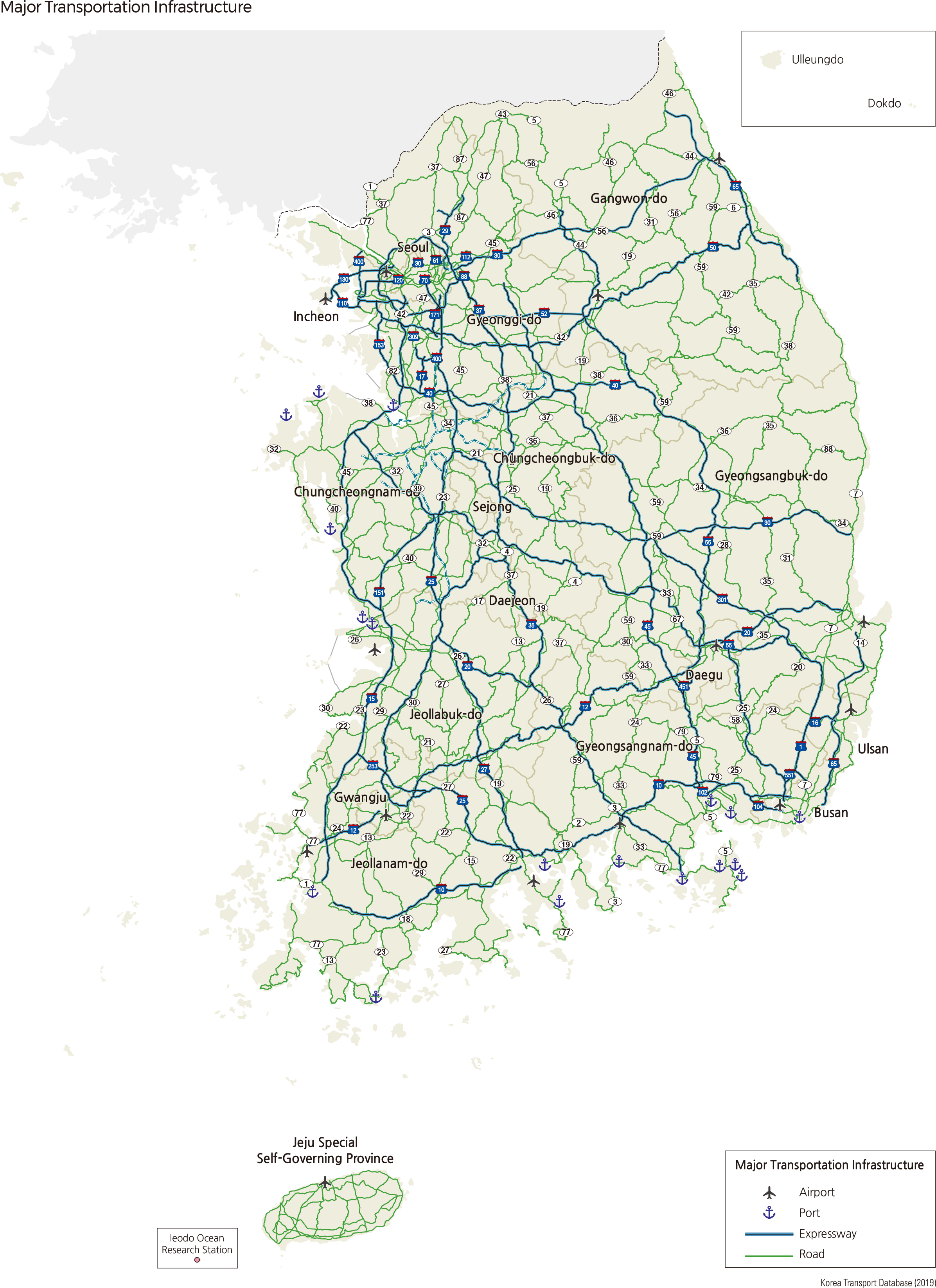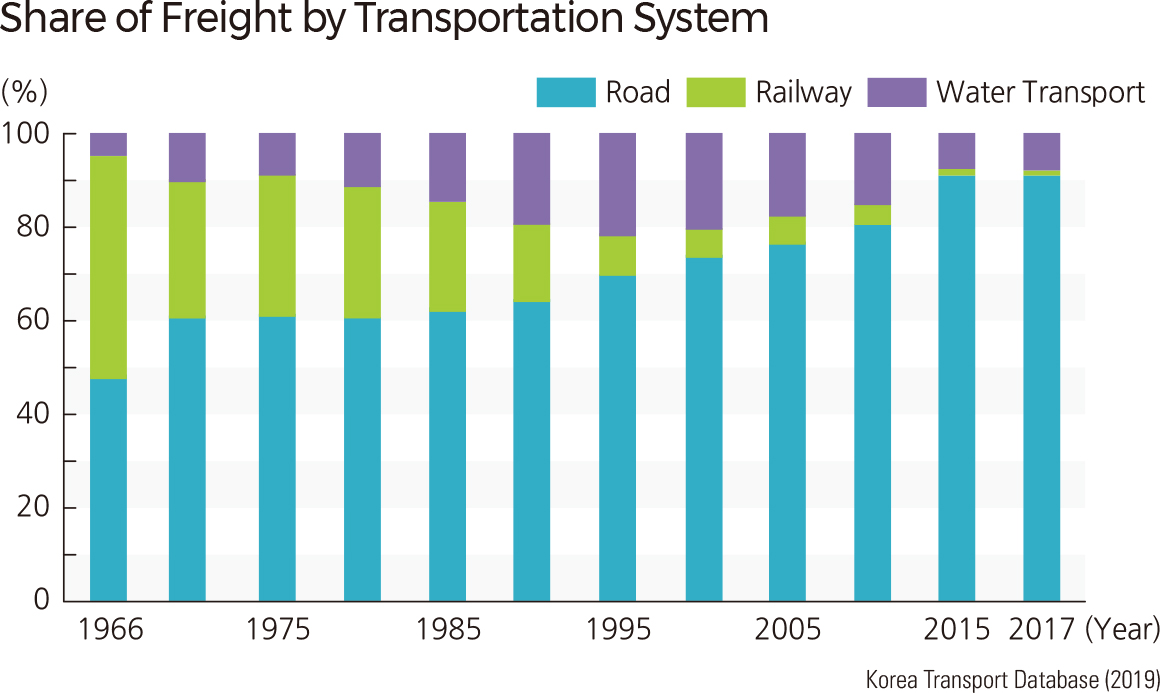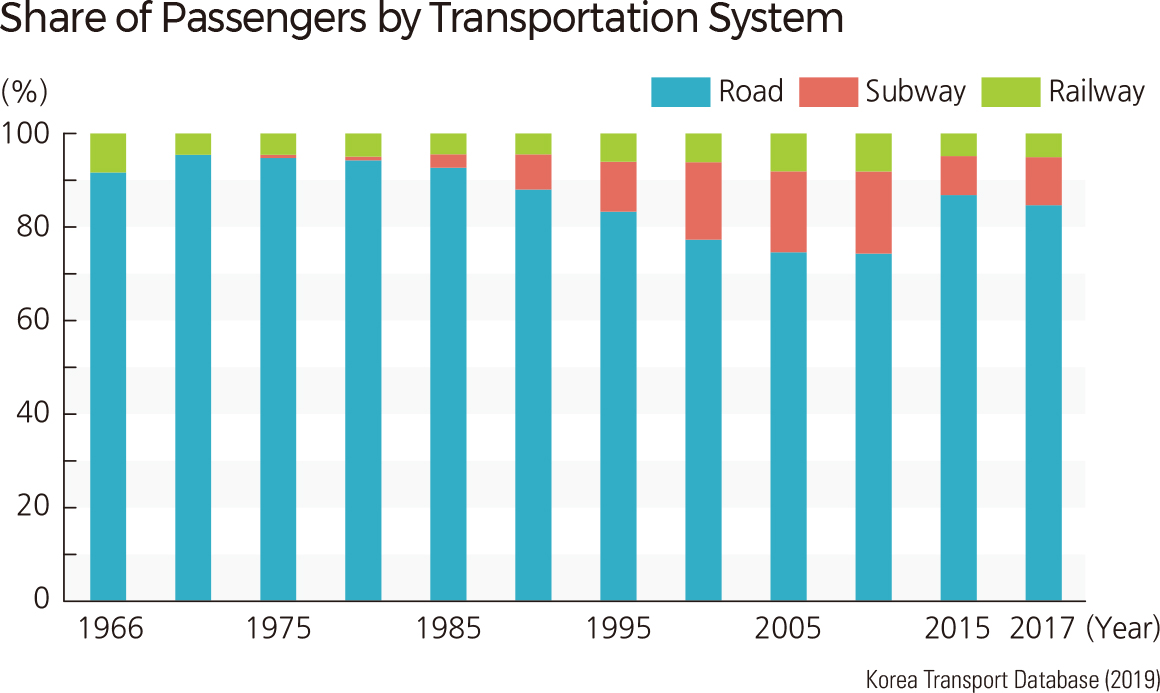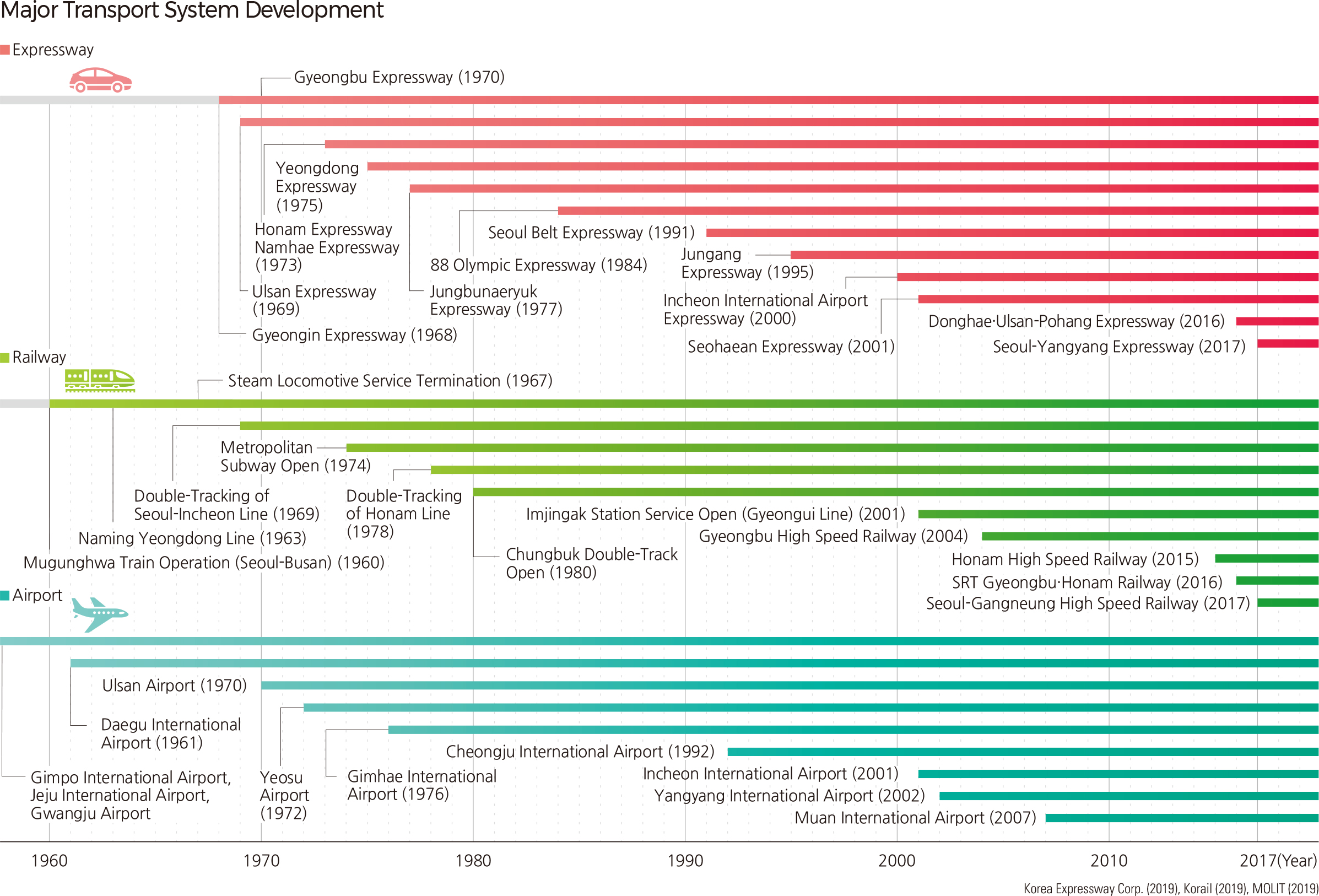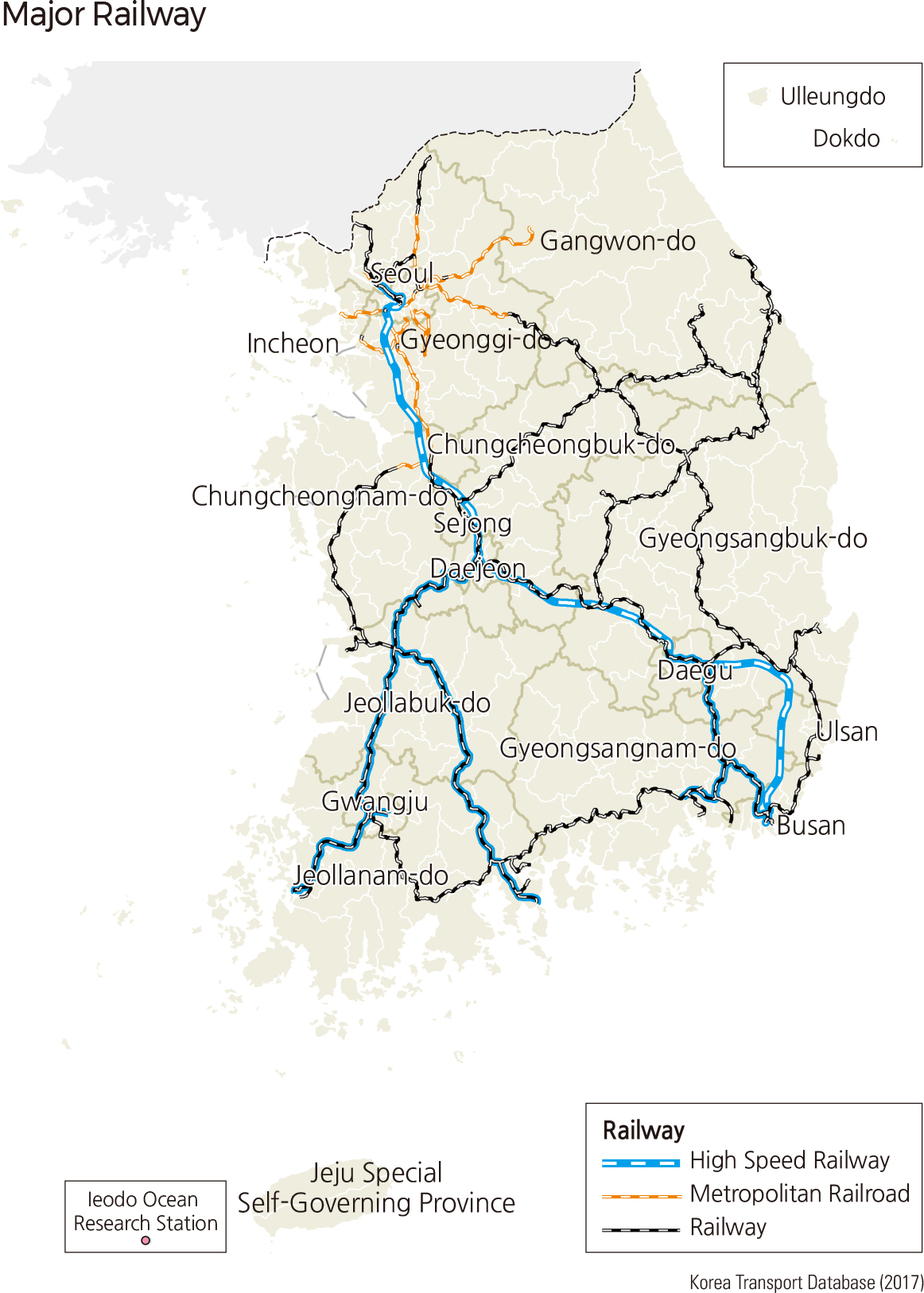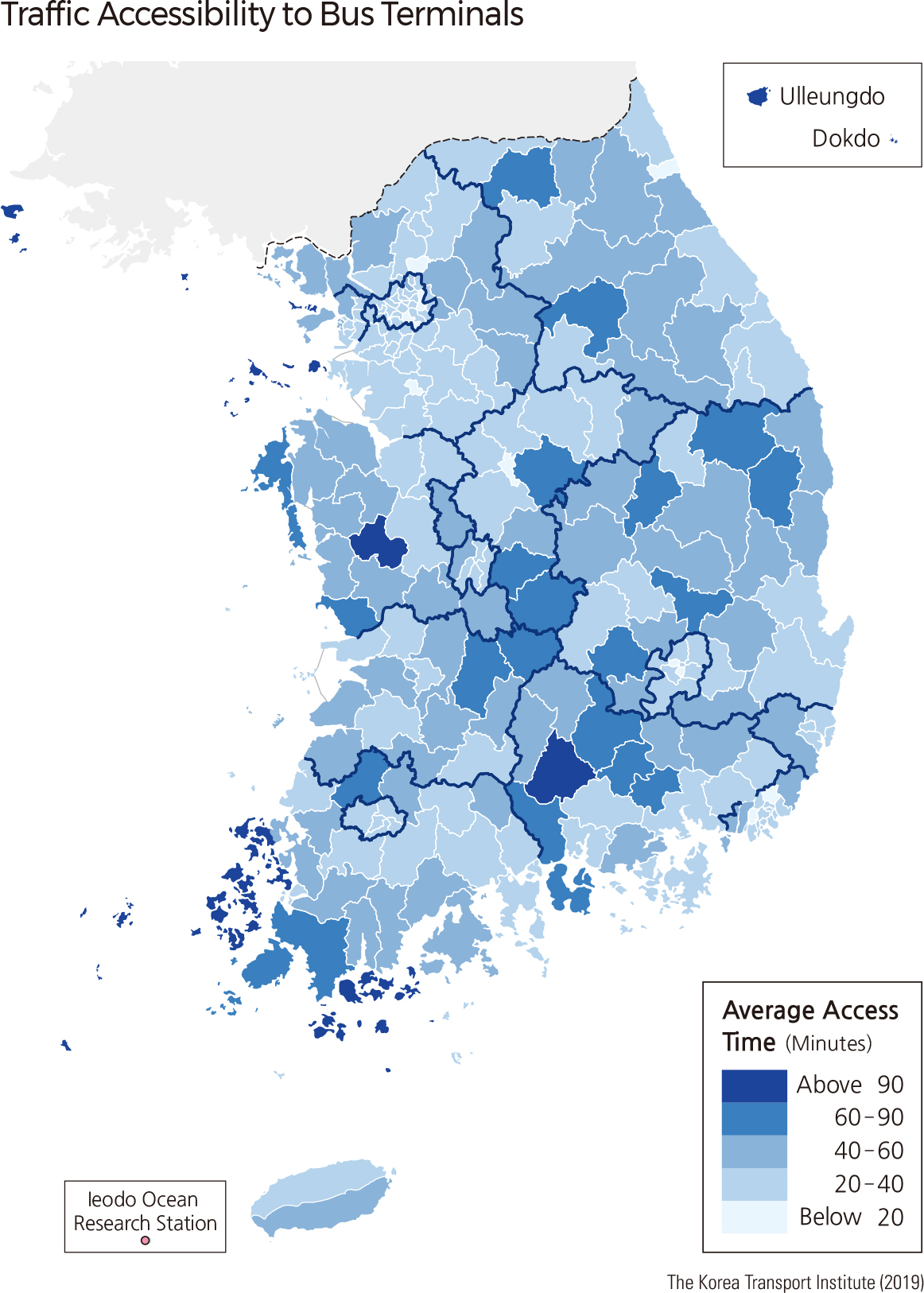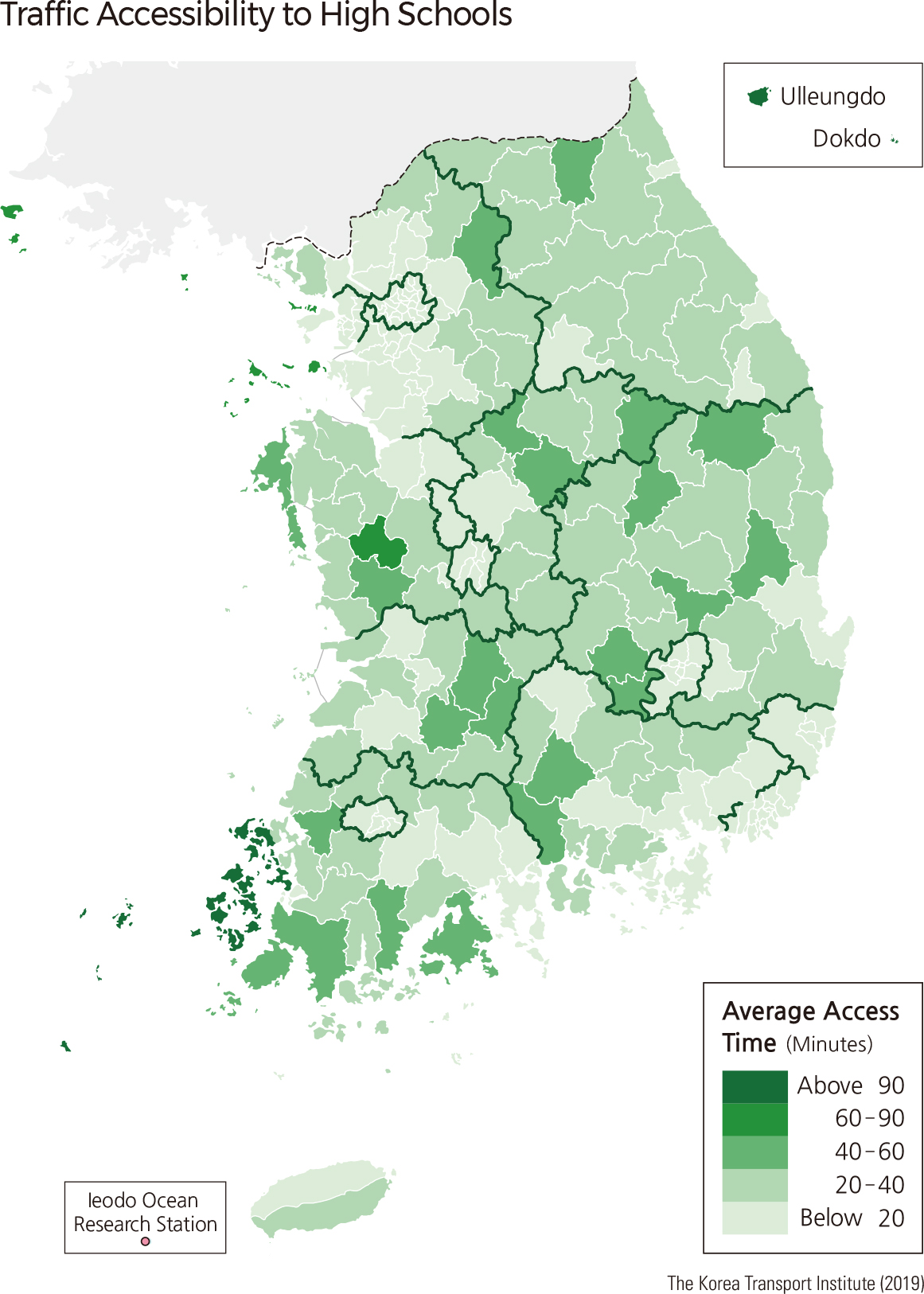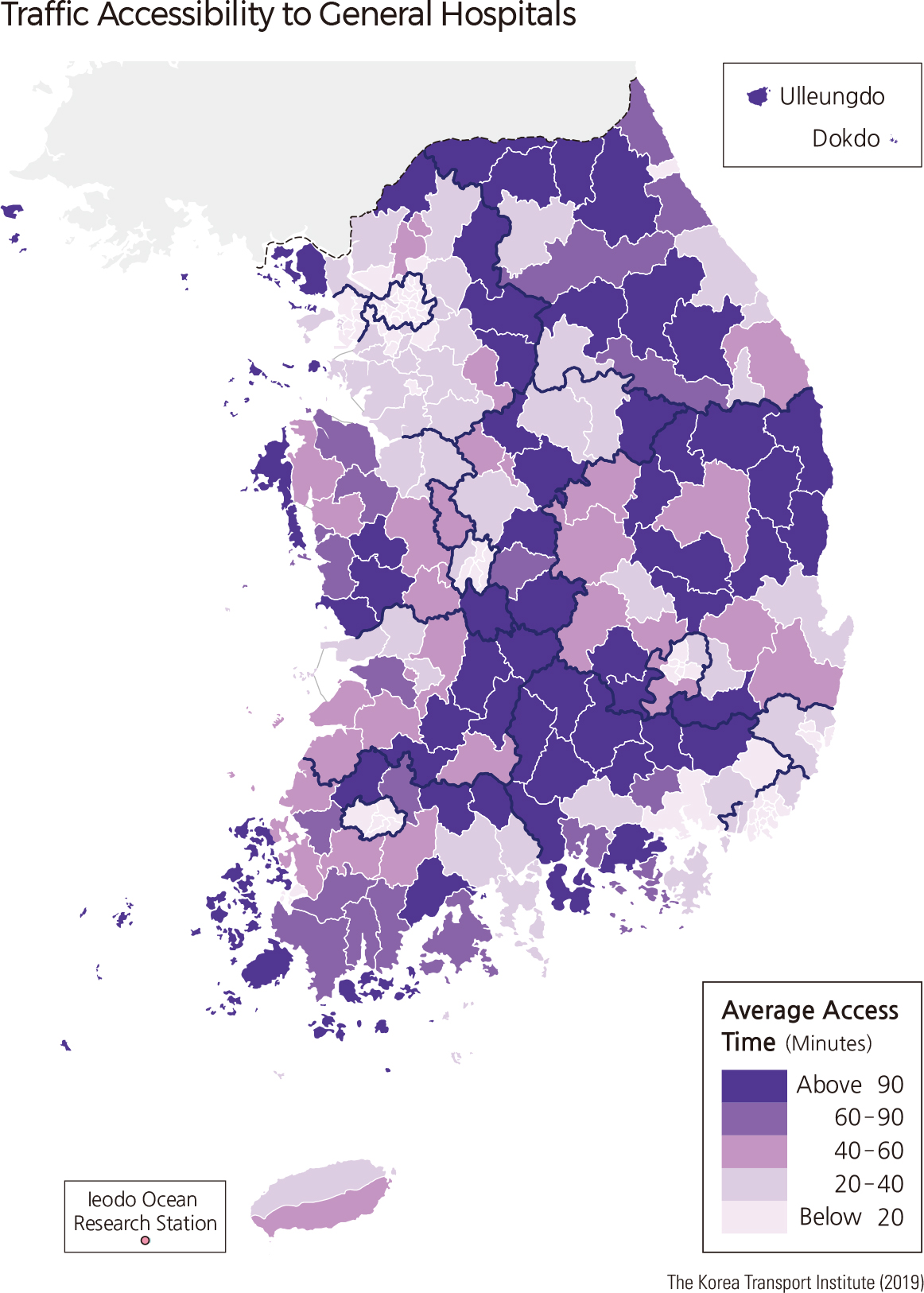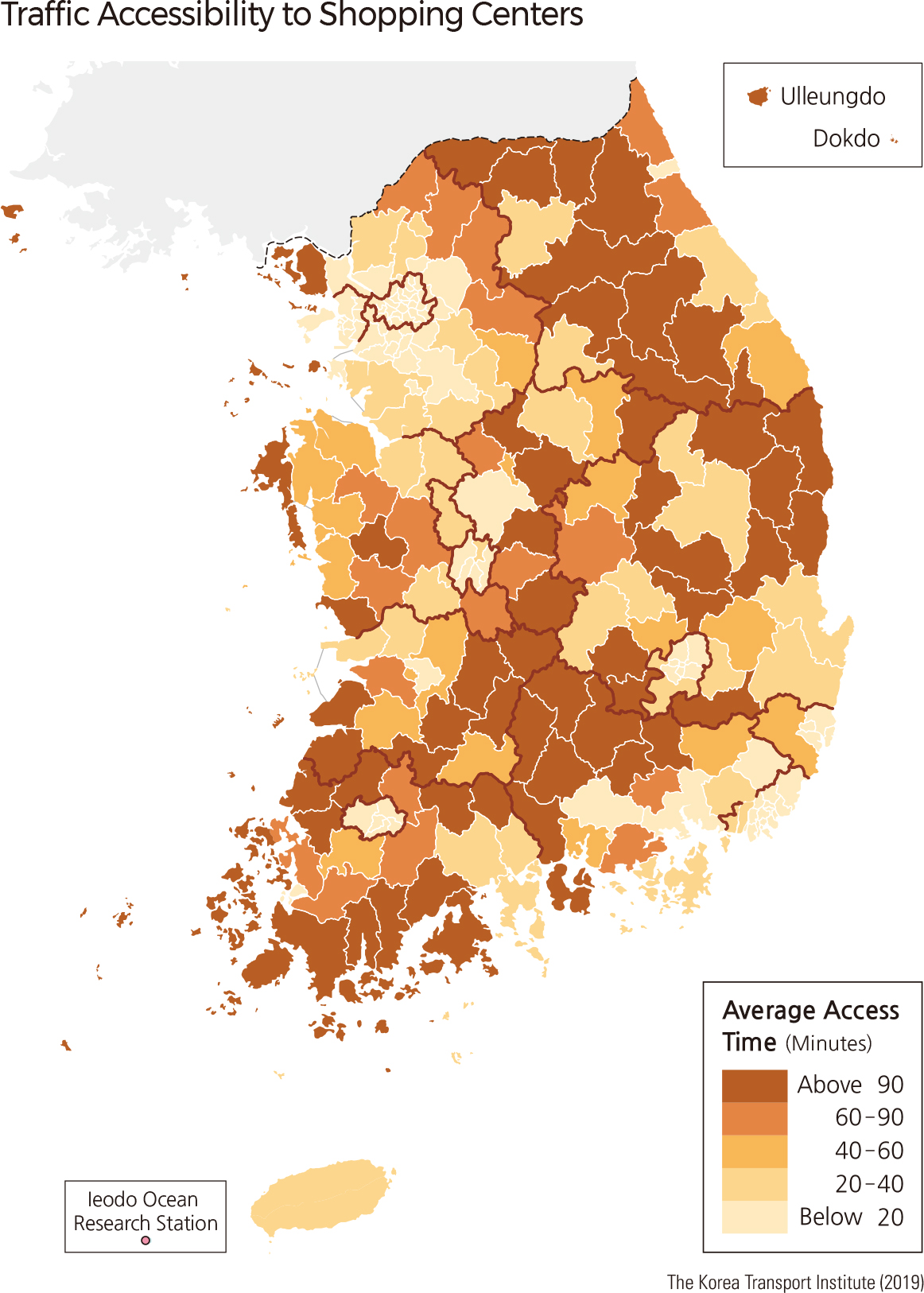English I 2019
Since the 1960s, construction of transportation infrastructure has taken place rapidly, and major national networks such as expressways, railways, airports, and seaports were built and served as the backbone for continued transportation expansion. Numerous important industries were developed along the Gyeongbu Axis, and in order to service those industries, the main transportation network was established to connect Seoul with Busan. The most notable project was the 428 km Gyeongbu Expressway, which connects Seoul with Busan. Construction began in 1968, and the expressway opened in 1970. It serves as the main corridor through the country. With the opening of Gyeongbu Expressway in 1970, the entire nation became more accessible to commuters, making it possible for travelers to move from point-to-point in the country within one day (“One-Day Life Zone”). With the opening of the Gyeongbu High-Speed Railway in 2004, it became even more so. Literally, a “Half-Day Life Zone" became available.
The transportation sector of the Korean economy rapidly developed as a result of the Export Industry Policy. It was reflected in the land spatial structure and regional growth structure that centered on metropolitan areas and the Gyeongbu Axis (Seoul-Busan). Korea’s entry into modern transportation began with railways that the Japanese built to invade Korea and seize its resources during the colonial period. In 1955, diesel engine locomotives and a subway system were introduced, and double-track railway projects were promoted. The modernization of rail traffic has been ongoing, and in 2004 the Seoul-Busan High-Speed Railway began operation. The development of highways began with the construction of the Gyeongbu Expressway in the 1970s, and since the late 1980s, more and more roads have been built and improved as road traffic has increased. Major Korean ports are primarily located along the southeastern coast, which allows for the ready import and export of materials and products needed for chemical and industrial plants located in that region. In 1958, Gimpo Airport opened. In 1968, Jeju Airport began operations. In 2001, Korea's air transportation started a new chapter with the opening of the ultra-modern Incheon International Airport on Yeongjong Island.
The traffic accessibility index measures the average time spent by public transportation users from the centroid of each area to various facilities such as bus terminals, high schools, general hospitals, and shopping centers. Traffic accessibility to these key facilities is relatively low in rural areas compared to in large metropolitan cities. |
